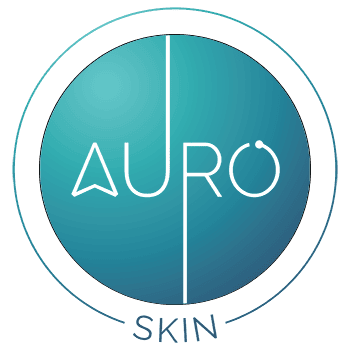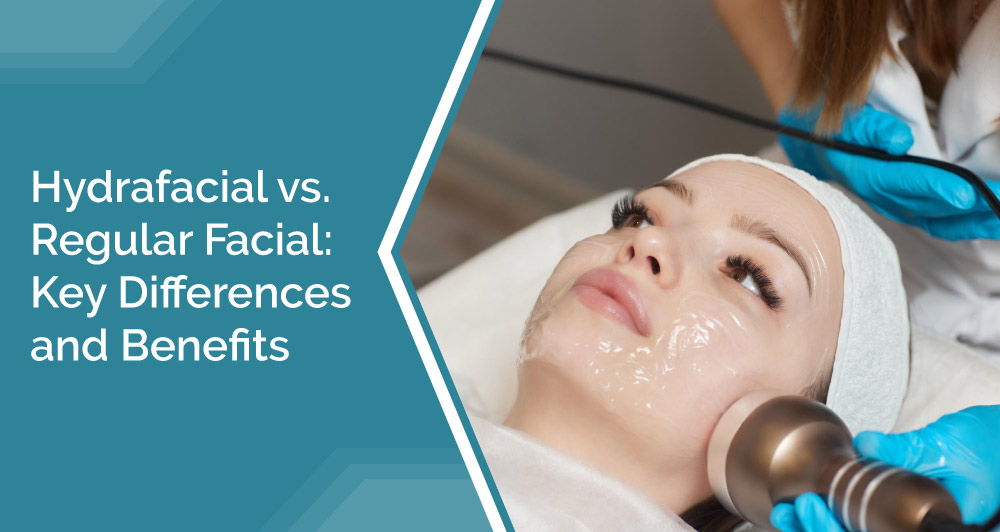September 30, 2025
Facials are among the most popular treatments for maintaining healthy-looking skin, but not all facials are created equal. While traditional salon facials provide relaxation and surface-level cleansing, advanced treatments like Hydrafacial have introduced a new standard in skin care.
The difference between a Hydrafacial and a regular facial lies in the technology, depth of cleansing, and long-term benefits. In this article, we will explore how Hydrafacial compares with regular facials, its advantages, and whether it may be a good option for different skin types.
A] What is a Regular Facial?
A regular facial is a common salon or spa service designed to refresh the skin through a combination of cleansing, exfoliation, steam, massage, and the application of masks or creams. These steps help to remove surface impurities, improve circulation, and provide temporary relaxation.
However, regular facials vary greatly in technique and product quality depending on the spa or therapist. While they may leave the skin feeling refreshed, the results are often superficial and short-lived. For patients with more specific concerns, such as acne, pigmentation, or fine lines, the limitations of consistency and depth in regular facials can be a drawback.
B] What is a Hydrafacial?
Hydrafacial is a medical-grade, machine-based facial treatment that combines cleansing, exfoliation, extraction, and hydration in one procedure. It follows a patented three-step process: first, gentle cleansing and exfoliation to remove dead skin cells; second, an acid peel and vacuum-based extraction to clear pores; and finally, infusion of antioxidant-rich serums that hydrate and nourish the skin. The procedure is non-invasive, safe, and effective for all skin types, including sensitive skin.
Unlike regular facials, Hydrafacial delivers consistent results with minimal discomfort, making it a popular choice for patients seeking both immediate and long-term skin health improvements.
C] Hydrafacial vs. Regular Facial: What Sets Them Apart?
1. Technique Used
A regular facial is performed manually, often using basic creams, masks, and tools. The experience depends largely on the therapist’s skill and the products selected. In contrast, Hydrafacial uses a patented, machine-based system that ensures precision and consistency in every session, minimising human error and variability.
2. Level of Cleansing
Regular facials provide surface-level cleansing, removing dirt and oil but not always addressing deeper skin congestion. Hydrafacial, however, combines exfoliation with simultaneous infusion of hydrating serums, offering both deep cleansing and nourishment in one step. This dual action makes it more effective for long-term skin maintenance.
3. Skin Extraction Process
Manual extraction during regular facials can be uncomfortable and, in some cases, harsh on the skin. Patients often report redness or sensitivity following these extractions. Hydrafacial replaces manual methods with a gentle, vacuum-based suction system that painlessly removes blackheads, whiteheads, and other impurities, reducing the risk of trauma to the skin.
4. Personalisation
Customisation in regular facials is usually limited to basic skin type categories such as oily, dry, or combination skin. Hydrafacial offers a much higher degree of personalisation, with targeted boosters and serums designed to address concerns like acne, hyperpigmentation, dehydration, or early signs of ageing.
5. Comfort and Downtime
Depending on the products used, a regular facial may leave the skin temporarily red or irritated, especially for those with sensitive skin. Hydrafacial, on the other hand, is designed to be comfortable and non-invasive. Patients typically leave the clinic with refreshed skin and no downtime, resuming daily activities immediately.
6. Results and Efficacy
While regular facials deliver short-term improvements such as a fresher look or temporary brightness, their effects fade quickly. Hydrafacial provides immediate results, which include clearer, smoother skin after just one session and cumulative benefits when performed regularly. Improved hydration, reduced congestion, and better skin texture are common outcomes.
7. Suitability for Skin Types
Regular facials are not always suitable for patients with sensitive or acne-prone skin, as certain manual techniques or products may aggravate these conditions. Hydrafacial is safe for almost all skin types, including sensitive, acne-prone, or ageing skin, making it a versatile choice for diverse patient needs.
D] Advantages of Hydrafacial Treatment
The advantages of Hydrafacial treatment extend beyond surface-level cleansing. It offers deep exfoliation and pore purification without the harsh abrasives of traditional methods. The vacuum-based extraction makes the process painless while effectively removing impurities. At the same time, antioxidant-rich serums hydrate and nourish the skin, improving texture, reducing congestion, and softening fine lines.
Hydrafacial is also suitable for sensitive skin, as the procedure avoids aggressive chemicals and manual pressure. With consistent sessions, patients can achieve healthier-looking, revitalised skin, making Hydrafacial a preferred option for those who prioritise both comfort and results in their skincare treatments.
E] Is Hydrafacial Good for Everyone?
For most patients, the answer is yes. Hydrafacial is beneficial for acne-prone skin, dryness, pigmentation, or early signs of ageing, as it addresses multiple concerns in a single treatment. However, patients with conditions like rosacea, eczema, or those on specific medications may require a dermatologist’s advice before undergoing the procedure.
Ultimately, while Hydrafacial is safe and versatile, professional evaluation is key to determining whether it is the right treatment for a patient’s specific concerns.
Final Thoughts
When comparing Hydrafacial and regular facials, the difference between Hydrafacial and regular facials is clear. Hydrafacial delivers more precise, consistent, and results-driven outcomes. While regular facials may provide relaxation and short-term freshness, Hydrafacial offers advanced cleansing, hydration, and long-term improvements in skin quality. For those asking, “Is Hydrafacial good for skin?”, the evidence suggests it is an excellent choice for nearly all skin types. Patients seeking comprehensive care should consult a trusted skin clinic in Mumbai to discuss their goals and suitability. Book an appointment today!

